Cajun Shrimp Étouffée is Classic New Orleans at its best. Shrimp étouffée is made with succulent shrimp cooked in a spicy roux-based sauce with the holy trinity of onions, green bell peppers, and celery, along with garlic. It’s a perfect dish to serve at your Mardi Gras festivities or any time that you are craving bold, spicy flavors. Serve it with rice and crusty French bread for an unforgettable meal. Laissez les Bon Temps Rouler!
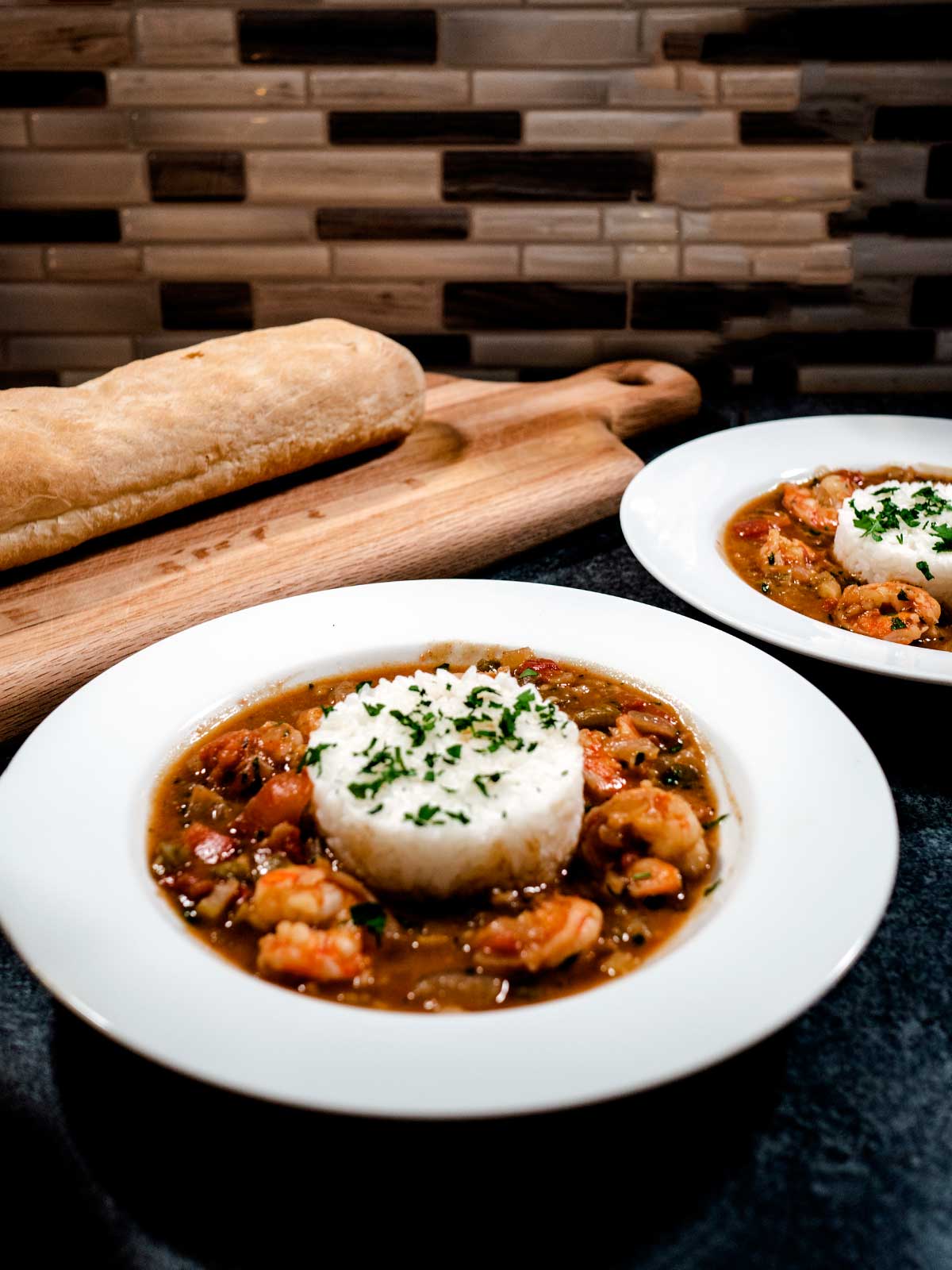
Jump to:
What is Étouffée?
Étouffée is a roux based dish served that is typically served over rice
It is popular in both Cajun and Creole cuisines. It’s made with the “trinity” and is typically finished off with either shrimp or crawfish.
Shrimp, sometimes referred to as prawns is a salt-water crustacean. Crawfish, on the other hand is a fresh water crustacean. Both shrimp and crawfish have a similar taste and can be used interchangeable in recipes such as étouffee.
Ingredients: Here’s What You’ll Need To Make This Classic New Orleans Recipe
Shrimp Étouffée uses classic New Orleans ingredients.
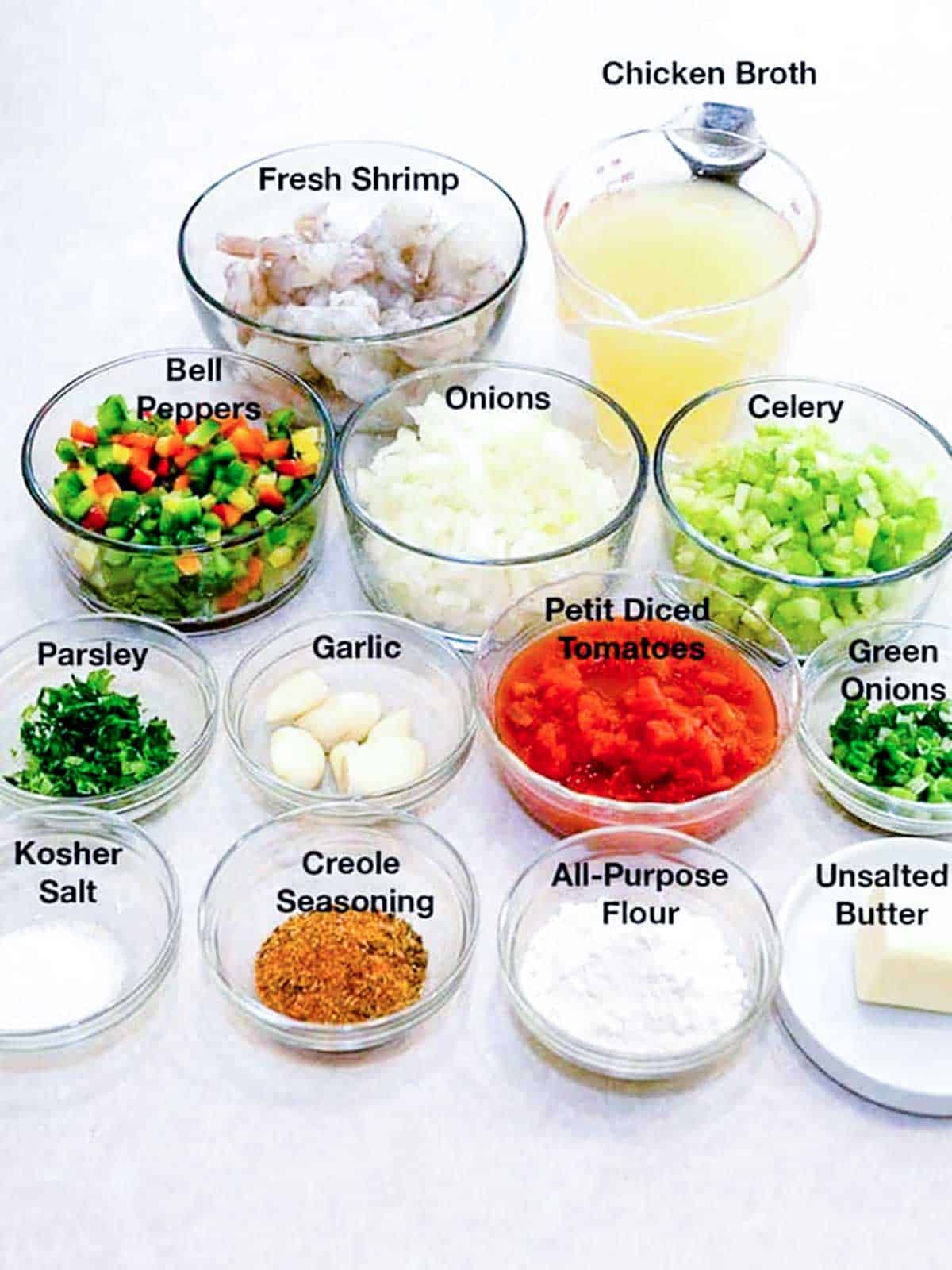
- The Shrimp: I guess it goes without saying that you need to use shrimp! I always use fresh shrimp. I’m fortunate to live along the Gulf Coast where fresh shrimp is plentiful.
- The Roux: Roux is the foundation for this delicious recipe. It only uses two ingredients – butter and flour.
- The Holy Trinity: Many classic New Orleans recipes use the holy trinity of onions, celery, and bell pepper. Add garlic and you have the holy trinity with the “pope’s nose”! For the bell pepper, I used a combination of red, green, and yellow because that’s what I had on hand. You could, however, just use green bell pepper.
- The Seasonings: The only needed seasonings in this recipe are salt and Cajun seasoning. I like to use Emeril’s Essence.
- The Liquid: Petite Diced Tomatoes add liquid, color, and flavor to this delicious dish. Chicken broth rounds out the flavor.
- The Garnish: I like to add a garnish of minced fresh parsley, sliced green onion tops or a combination of the two when I serve this dish.
How to Clean the Shrimp
Generally, I always buy fresh shrimp – with the head and shells still on (Photo 1). The reason is that I feel that I’m getting the freshest shrimp this way.
However, the most time-consuming part of making the Shrimp Étouffée is cleaning the shrimp, i.e., removing the heads (Photo 2), peeling the shrimp, and deveining them (Photo 3).
Anyone who thinks that deveining the shrimp is unnecessary, must have never actually seen how gross the vein can be! The fresher the shrimp, the easier it is to remove the vein.
I actually remove not only the vein on the top of the shrimp, but also the much smaller vein on the bottom (Photos 4 and 5). Out of the two pounds that I started with, I ended up with just under 14 ounces of cleaned shrimp (Photo 6).
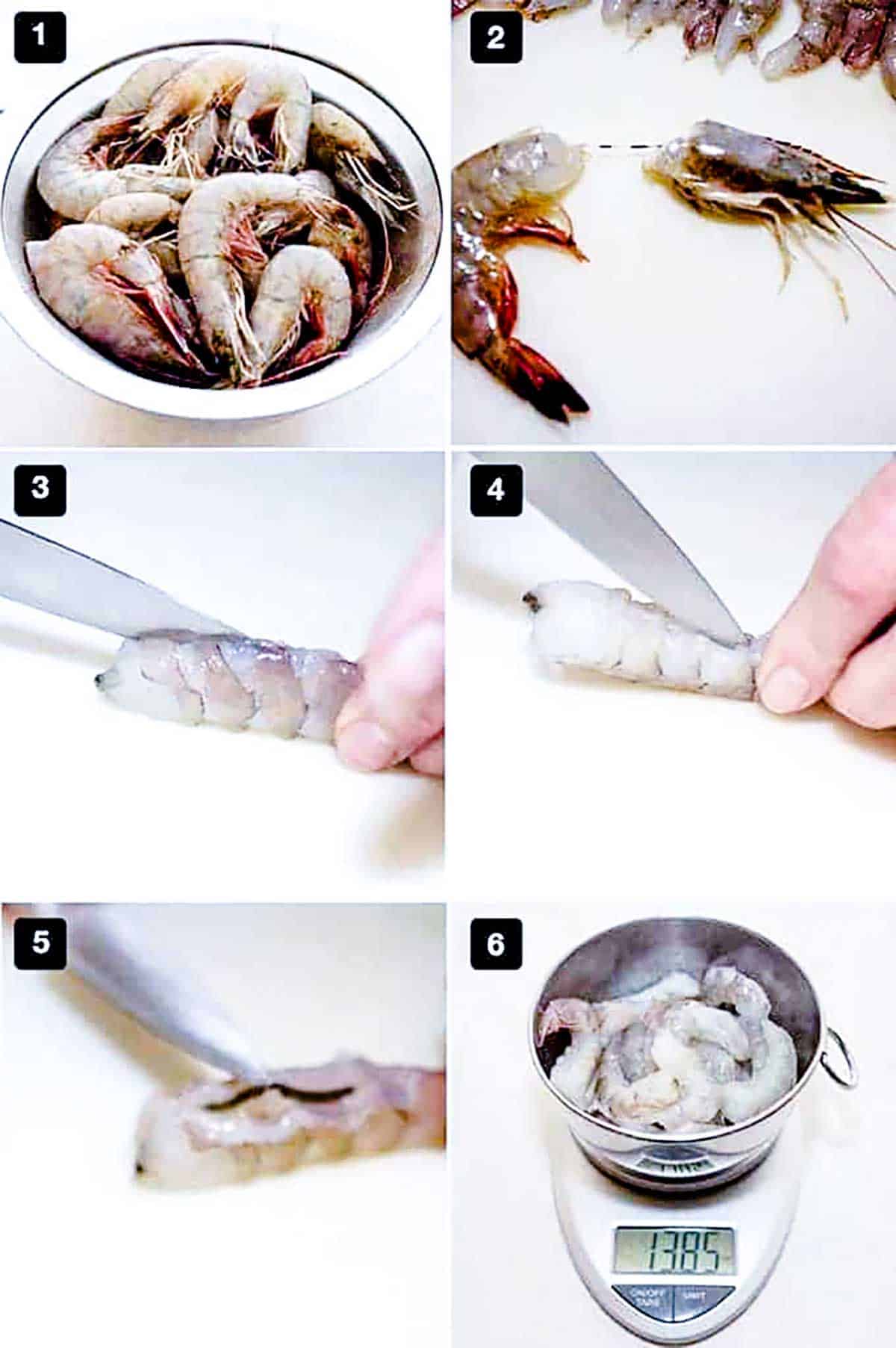
Steps to Making Shrimp Êtouffée
The second most time-consuming part of making the Shrimp Étouffée is cutting up the vegetables. However, once everything is cut up, the dish comes together quickly and easily.
- I started by making a butter and flour roux in a Dutch oven. I cooked the butter and flour over medium heat until the color of the roux was like that of peanut butter. This took about 5 minutes.
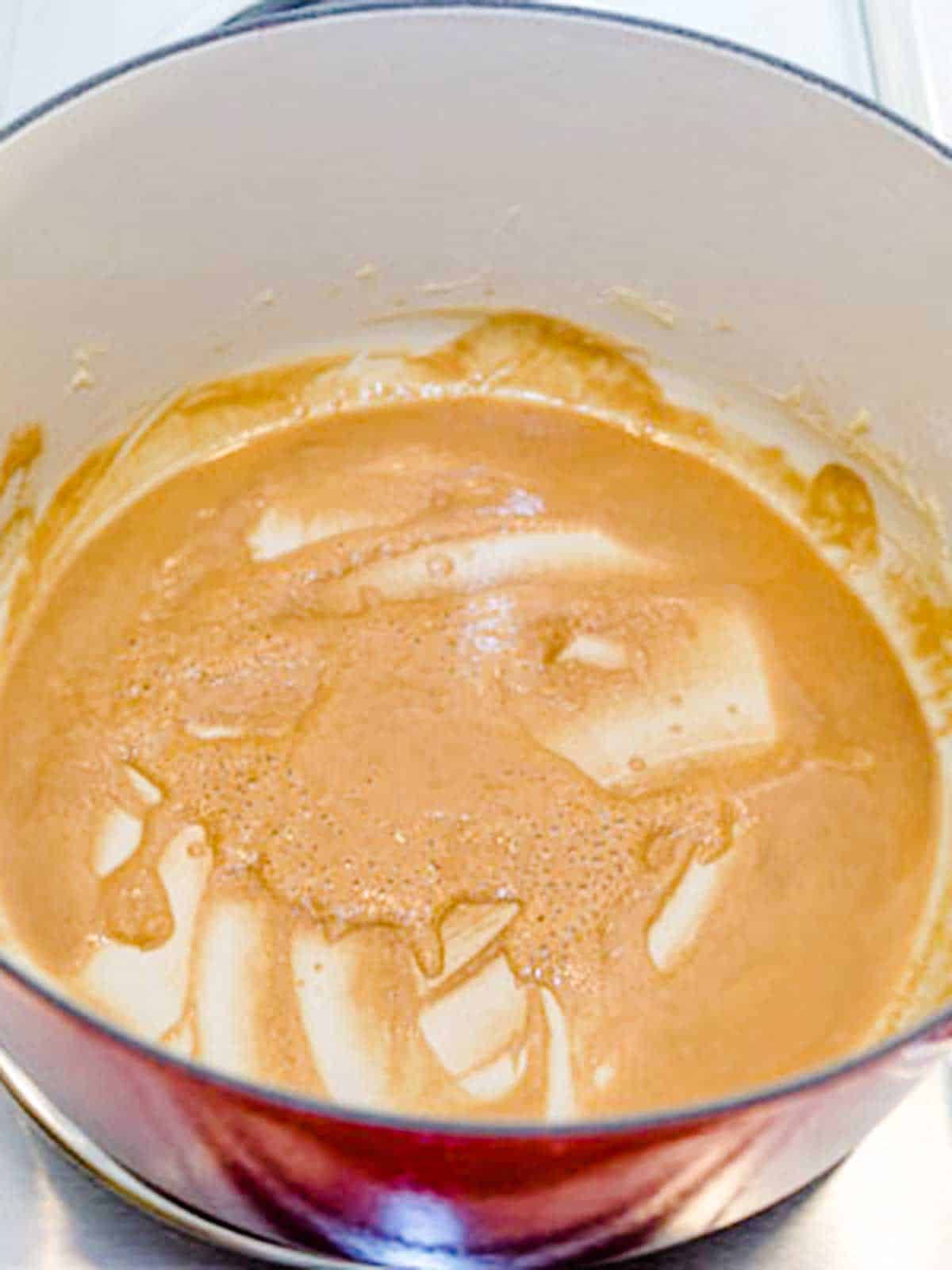
- Then, I added the onions, bell pepper, celery, and garlic to the roux. I cooked the mixture for about 10 minutes. During this time, I stirred the mixture often with my roux paddle.
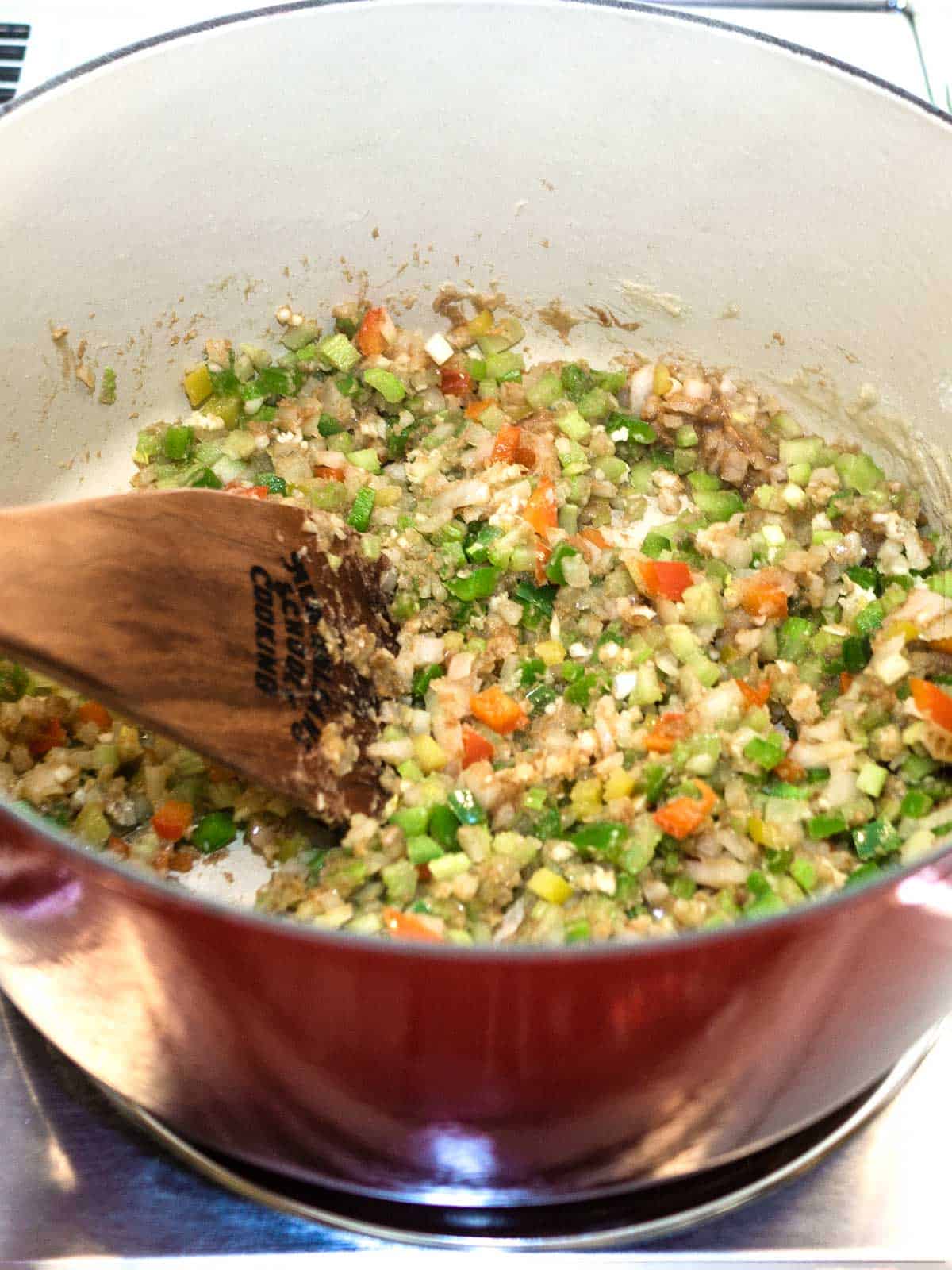
- After 10 minutes, I added the petite diced tomatoes, salt, and Cajun seasoning. I cooked the tomato mixture for several minutes.
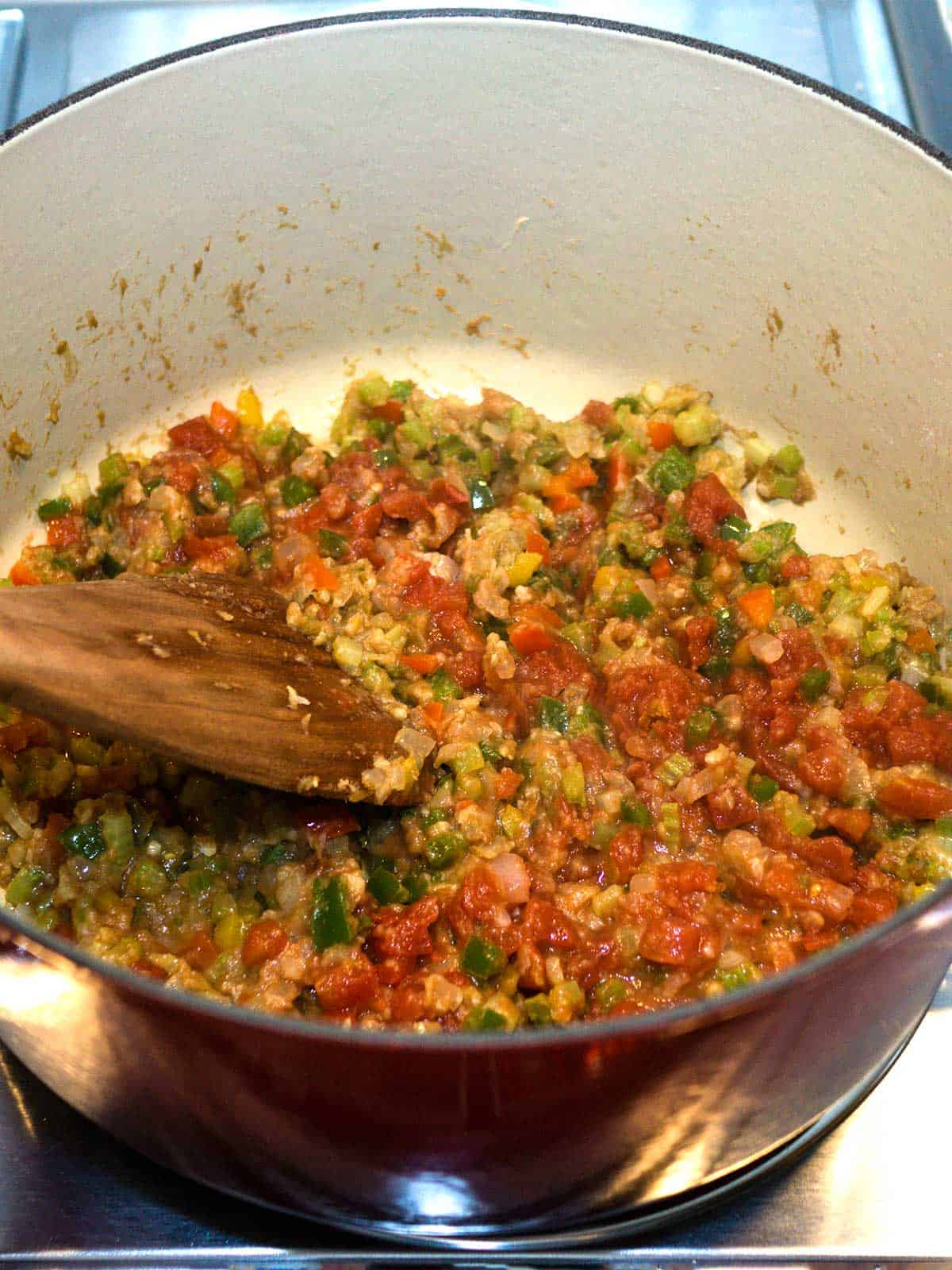
- Then, I added the chicken stock. I brought the mixture to a boil, stirring constantly until it was thickened.
I reduced the heat to low and simmered the Étouffée uncovered for about 45 minutes, until the vegetables were tender.
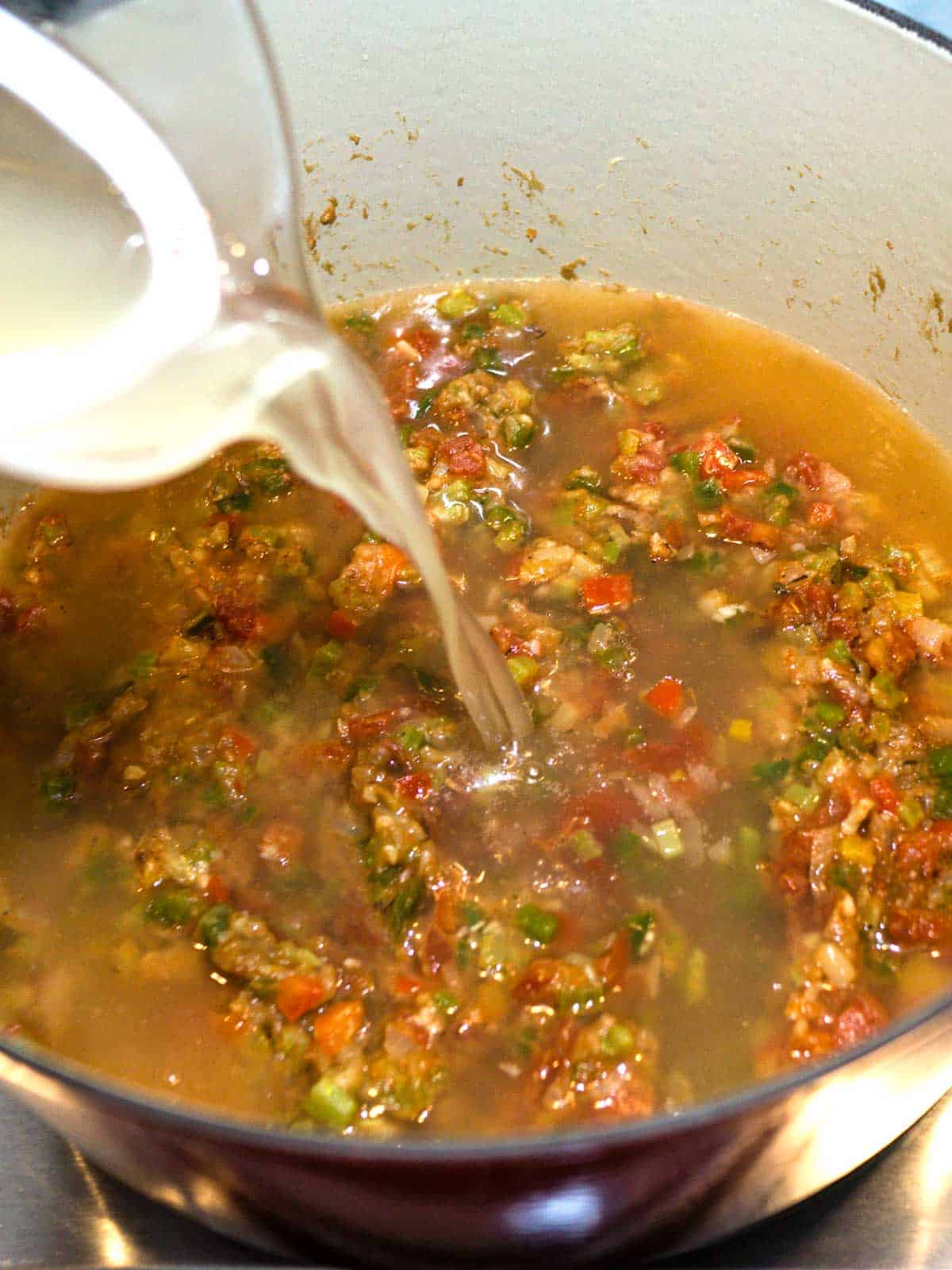
- When the vegetables were tender, I increased the heat to medium and added the shrimp. I cooked the shrimp for about 5 minutes, just until they were cooked through.
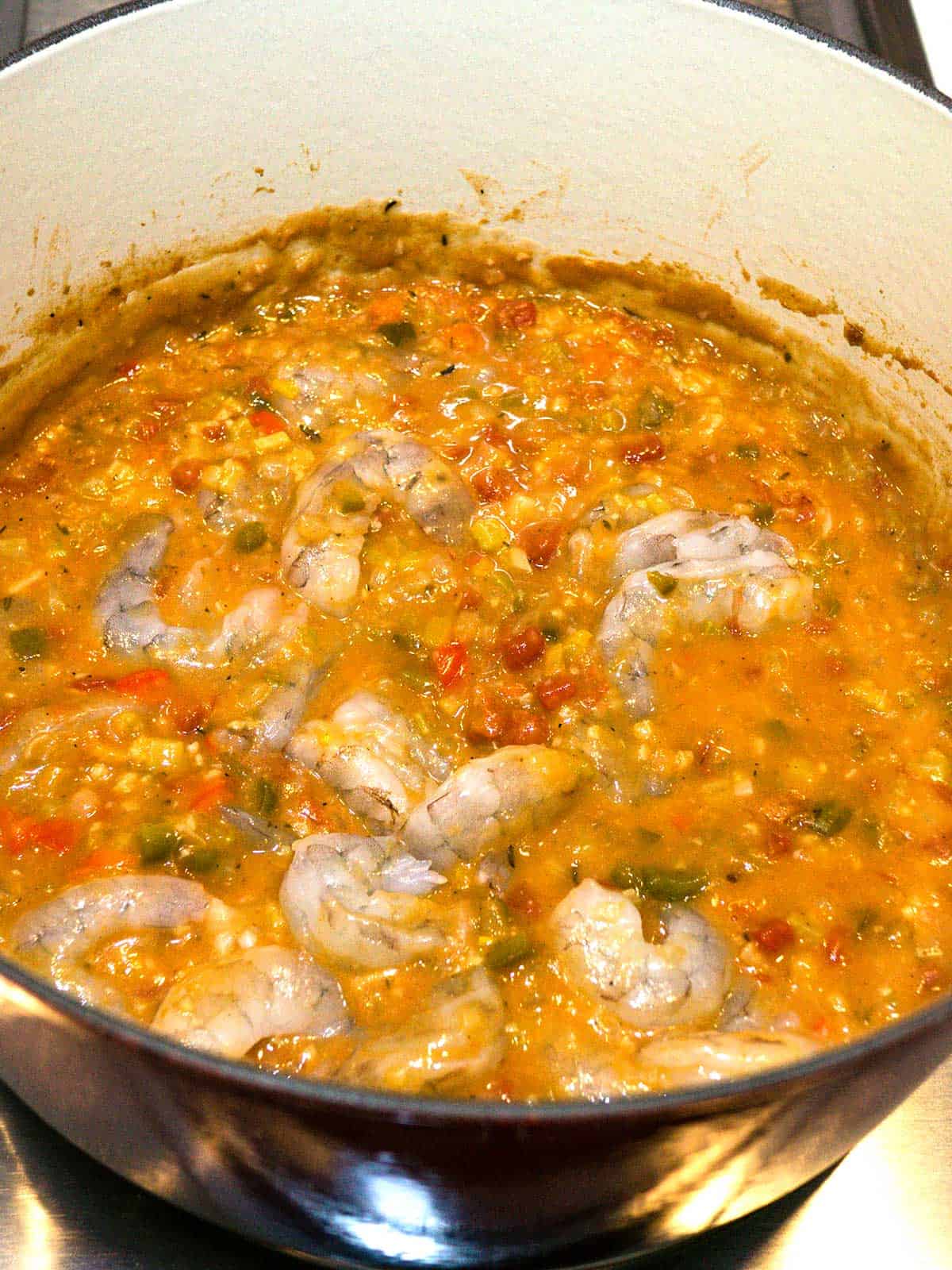
- Finally, I added some minced parsley and stirred the mixture to ensure that everything was well combined.
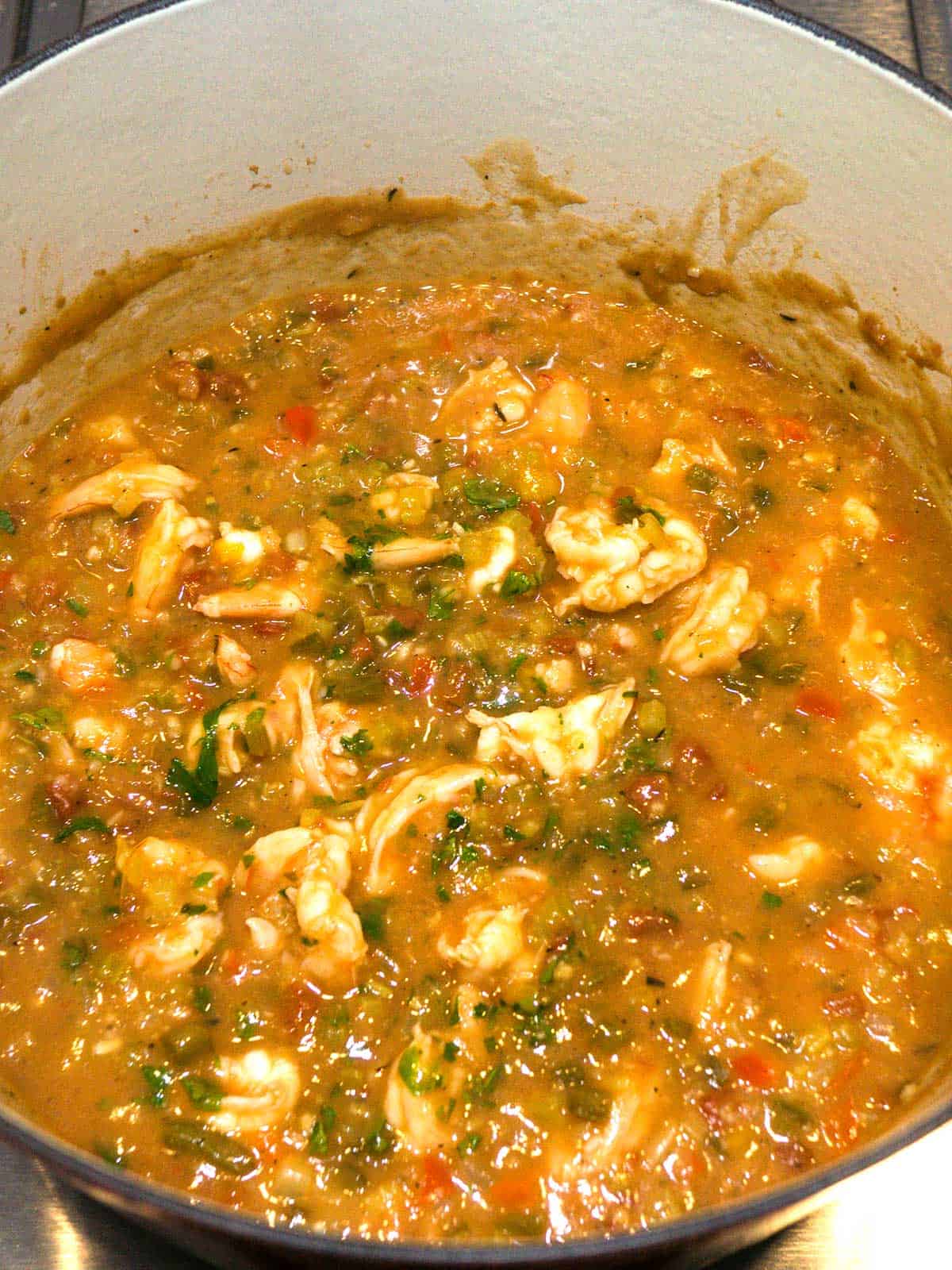
I served the Shrimp Étouffée with cooked white rice freshly baked baguette and a chilled Chardonnay. Laissez les Bon Temps Rouler – Yum!
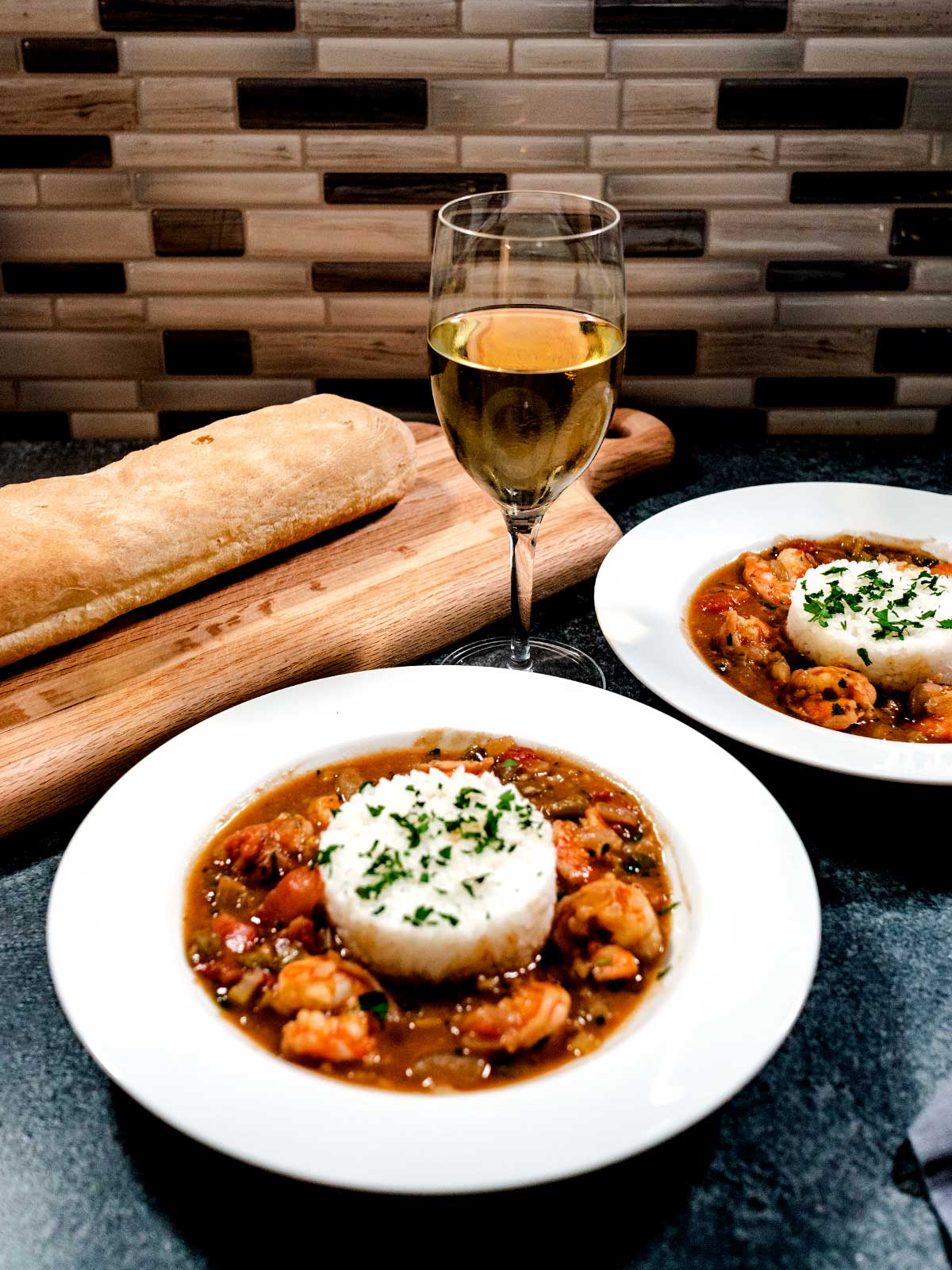
Frequently Asked Questions
If you don’t have the option of using fresh shrimp, you can use frozen. Just allow the shrimp to thaw by placing them in a colander with cold water running over them. Then drain well.
I like to make the roux with butter because of the richness that it adds. However, you can easily substitute oil for the butter. Often butter is used in both Cajun and Creole recipes.
While roux is easy to make, it can burn very quickly. To minimize the roux from becoming too dark, stir the butter and flour constantly. Also, be ready to add the onions, bell pepper, celery, and garlic as soon as the desired color is achieved. This will stop the roux from becoming any darker.
You can freeze the Shrimp Étouffée once it has come to room temperature. Store it in an air-tight, freezer safe container for 1 to 2 months. Slowly reheat it on the stove until heated through.
Other Classic New Orleans Dishes
If you’re looking for amazing classic New Orleans recipes to make for Mardi Gras or any time for that matter, you should also check out the following:
- Cajun Chicken Fricassee – This recipe is the Cajun version of the French Chicken Fricassee that is made with a traditional roux, and contains the holy trinity highlighted with Cajun seasonings. It’s easy to make and incredible to taste!
- Red Beans and Rice – In New Orleans, red beans are a cultural tradition dating back hundreds of years. Through the years, Red Beans and Rice was the quintessential dish associated with Mondays.
- Spicy New Orleans Jambalaya -Nothing speaks classic New Orleans cuisine like Spicy New Orleans Jambalaya. Laissez les Bons Temps Rouler with this delicious one-pot meal that’s perfect for Mardi Gras or any time for that matter.
- Beef Grillades and Smoked Gouda Grits -Beef Grillades (pronounced ɡree-yahds) and Grits is a classic New Orleans dish. The beef is cooked in a flavorful gravy accented with the Trinity of onion, celery, and bell pepper until it is fork tender.
- Pasta Jambalaya – Replace the rice in a traditional jambalaya with pasta to create an unforgettable meal!
- Spicy New Orleans Shrimp Creole – Shrimp Creole is a classic New Orleans dish with both Spanish and French undertones. It consists of shrimp cooked in a spicy mixture of diced tomatoes and the trinity of onion, celery, and bell pepper.
This is an update from January 18, 2019. I added new pictures and a video. Also, I updated the text a bit.
If you liked this recipe for Shrimp Étouffée, please consider rating it and leaving a comment. I’d love to know how you liked it!
✯ Thank you so much for visiting Pudge Factor. I hope you’ll come back! ✯
Recipe
Want to Save This Recipe?
Enter your email & I’ll send it to your inbox. Plus, enjoy weekly doses of culinary inspiration as a bonus!
By submitting this form, you consent to receive emails from Pudge Factor.
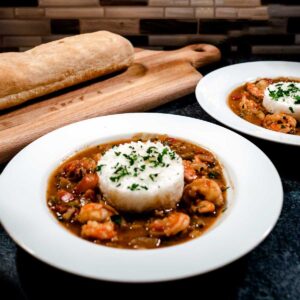
Shrimp Étouffée
Ingredients
- 3 Tablespoons unsalted butter (See Tip 1)
- ¼ cup (1.25 ounces) all-purpose flour
- 1 ½ cups chopped onion
- 1 cup chopped bell peppers
- 1 cup chopped celery
- 6 cloves garlic, minced
- 1 cup petit diced tomatoes, undrained
- 1 teaspoon Kosher salt
- 1 Tablespoon Creole seasoning
- 2 cups chicken stock (See Tip 2)
- 2 pounds large head-on shrimp (See Tip 3)
- 2 Tablespoons minced parsley leaves
- Cooked white rice for serving
- Minced parsley or thinly sliced green onion tops for garnish (optional)
Instructions
- Melt the butter in a large Dutch oven set over medium heat. Add the flour and stir continuously to make a roux. Stir the roux over medium heat until the color of peanut butter, 5 to 7 minutes. (See Tip 4)
- Add the onions, bell pepper, celery, and garlic to the roux; cook, stirring occasionally, for 10 minutes. (See Tip 5)
- Add the tomatoes along with the salt and Creole seasoning. Cook the tomatoes for 2 to 3 minutes and then whisk in the chicken stock.
- Bring the mixture to a boil stirring constantly until thickened. Reduce heat to low; simmer the Étouffée uncovered, stirring occasionally, for 45 minutes or until the vegetables are tender. Can be made in advance up to this point.
- Heat Étouffée over medium heat; add the shrimp, stirring to evenly distribute. Cook the shrimp for 5 to 7 minutes, or until they are cooked through. Add the chopped parsley and stir to combine.
- Serve immediately over cooked white rice; garnish with minced parsley or sliced green onion tops. Yield: 4 to 6 servings. (See Tip 6)
Tips/Notes
- I like to make the roux with butter. However, you could also make the roux the more traditional way by using oil instead of butter.
- I like to use low sodium chicken broth. That way, I can adjust the salt more easily to my preference.
- Large shrimp are categorized as 16 to 20 count per pound. Peeled and deveined results in about 14 ounces. If possible, use fresh shrimp. However, if you don’t have the option of fresh shrimp, you can use frozen. Just allow them to thaw by placing the shrimp in a colander and running cold water over them.
- Watch the roux carefully – it can burn very quickly. Also, stir the flour and butter constantly.
- The addition of the trinity will stop the roux from getting any darker. Therefore, make sure that the roux is the desired color before adding the vegetables.
- I always serve the Shrimp Étouffée with rice. I like to pack the rice in a 2.75-inch round mold. If you don’t have a mold, you could also use a large ice cream scoop or just spoon the rice into the dish.
- You can make the Shrimp Étouffée ahead of time up to the point of adding the shrimp. Shrimp cook very quickly and can become rubbery if cooked too long. Therefore, add the shrimp at the very last minute.





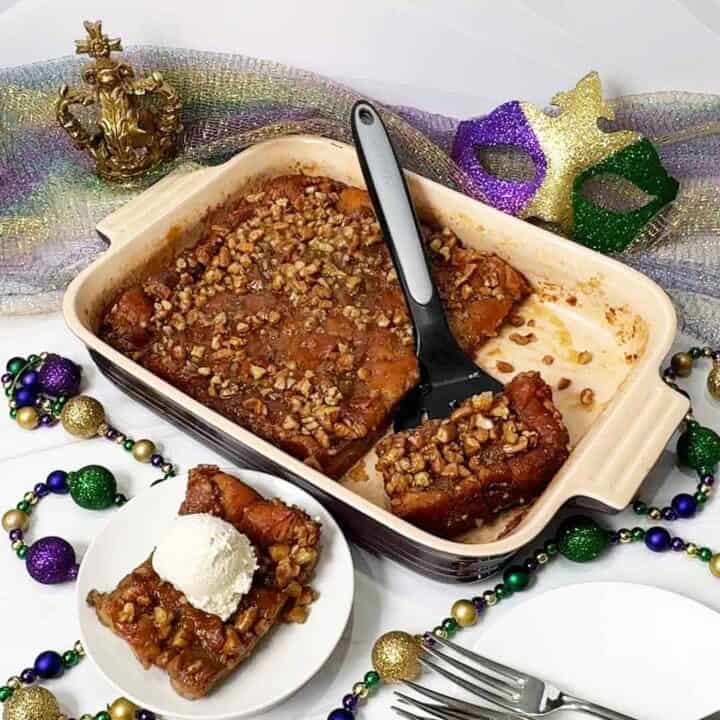
DON says
NO tomato’s in etouffee!
I was born and lived in New Orleans for 50 years and we don’t put tomatoes in etouffee!
Sunshine says
Is there a certain brand of creole seasoning that you can advice on ? Also I would like to add hot link sausage when would you advice I throw those on ? Can’t wait to try this
Chula King says
I actually use Emeril’s Essence that I make from his recipe. I would add the sausage after you’ve added the onions, bell peppers, celery and garlic. Sounds yummy to add sausage to this recipe.
I’d love to hear how it turned out!
Chula
Louis Le says
Can i use cake flour?
PudgeFactor says
I’ve never used cake flour to make the roux. However, I suspect that the cake flour would work fine. The reason is that cake flour is generally made with all-purpose flour and cornstarch. This results in a flour that is lower in gluten forming protein and higher in starch than regular all-purpose flour. It’s the starch that thickens sauces. Let me know how it turns out!
Sheryl Gladden says
So good! Love it!
PudgeFactor says
I’m so glad that you liked it. It’s one of our favorites!
c2king says
Hope you enjoy it!
A Forks Tale says
This was one of my favorite dishes in New Orleans. Can’t wait to try this recipe!
c2king says
It tastes incredible. You’re going to love it!
chefcarolb2014 says
Love, love, love shrimp etouffee! It’s been too long, though. Going to put this on my “to make” list!
c2king says
It really is delicious! Hope it turns out as good for you as it did for me. I do have to admit that pulling the heads off shrimp IS pretty gross!
Elaine @ Dishes Delish says
This looks so delicious that I have to make it. I’ll have to make a little batch since hubby doesn’t like spice. And I do, so I want to try it as it is. I have never bought head on shrimp. Eek. Probably won’t, but I applaud you!! Can’t wait to make it!
gritsandpineconescom says
This looks really delicious! Can’t wait to try this recipe!
c2king says
I’m so glad that you liked the recipe! Hope your dinner party is a success!
Jeanine says
This recipe is AWESOME!!! FOLLWED DIRECTIONS TO A T…Excellent! Can’t wait to make this for a dinner party.
Graham says
Salivating just reading recipe